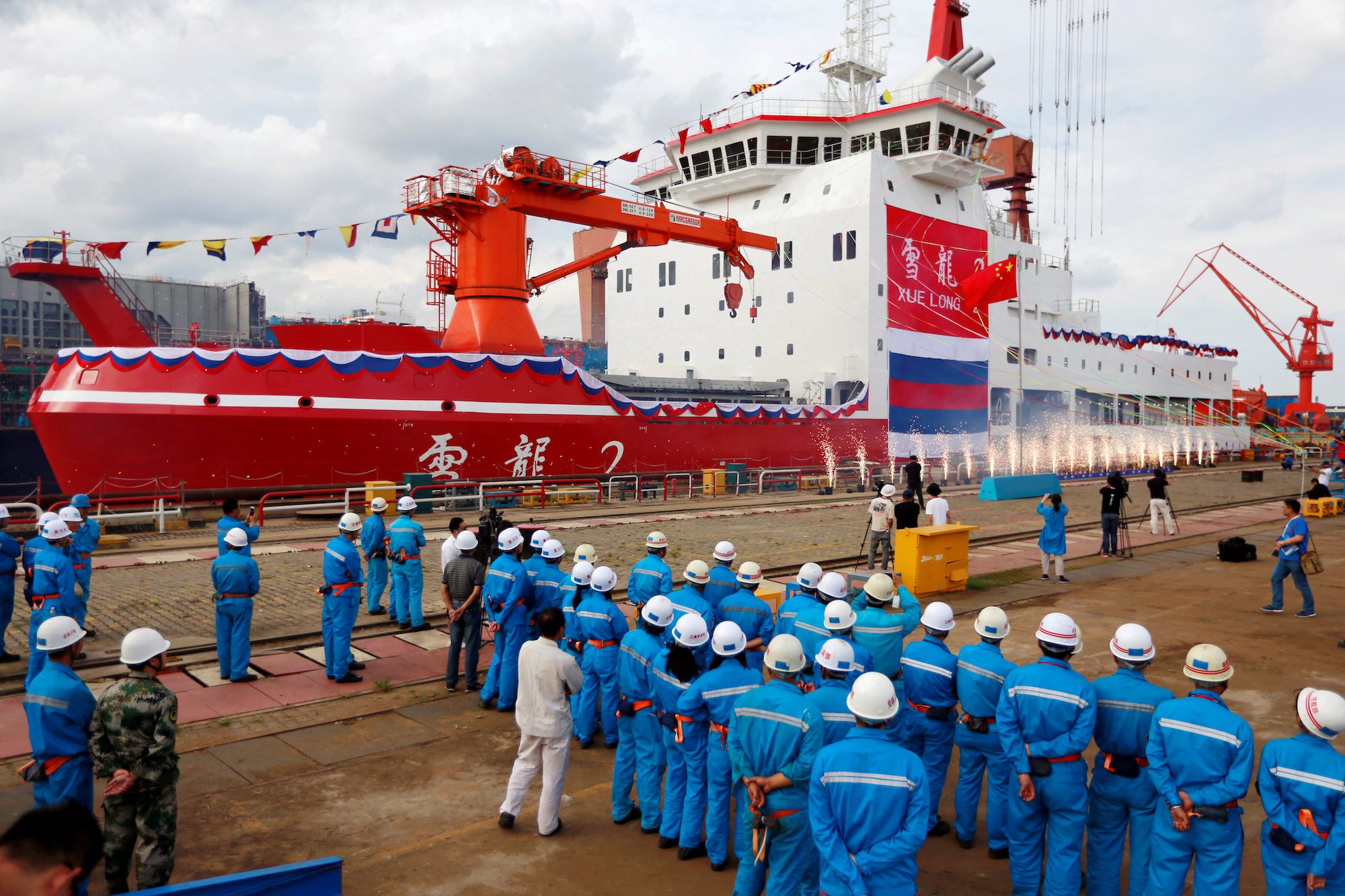China’s first home-built polar icebreaker Xue Long 2 has arrived in the Arctic for its summer 2025 research mission. The vessel departed from Shanghai around two weeks ago on July 5. After passing through the Bering Strait and entering the Chukchi Sea, the icebreaker has now turned east, traveling into the Beaufort Sea to the north of Alaska.
The U.S. Coast Guard icebreaker Healy is currently operating around 400 nautical miles further east as part of its annual Arctic patrol. A second Chinese icebreaker, the new polar research vessel Jidi, set sail for the Arctic this past weekend from Qingdao.
A third Chinese icebreaking research vessel Tan Suo San Hao appears to be en route as well and will likely be joining Xue Long 2 and Jidi in the Arctic later this summer. The vessel received a permit for Russia’s Northern Sea Route last week.
Last summer China sent three icebreakers to the Arctic simultaneously for the first time. Their Arctic voyages occurred while the U.S. Coast Guard’s sole available icebreaker at the time, Healy, was undergoing repairs in Seattle following an engine room fire in the Canadian Arctic.
Xue Long 2 is China’s first independently built polar icebreaker completing six Antarctic and four Arctic expeditions traveling more than 250,000 nautical miles, since entering into service in 2019. With a length of 122.5 meters and a displacement of 13,996 tonnes it is slightly smaller than the USCGC Healy. The polar class 3 vessel is designed to break ice up to 1.5 meters thick. It recently underwent weeks-long maintenance at Cosco Shipping Heavy Industry yard in Zhoushan.
In previous years the vessel completed extensive voyages across much of the Arctic Ocean including visits to the North Pole and trips along Northern Sea Route. Last summer Xue Long 2 became the first Chinese icebreaker to visit the Russian city of Murmansk highlighting the increasingly close relations between Russia and China in the Arctic.
The two countries also conducted their first joint Arctic patrol in September 2024 sending four vessels, two Chinese coast guard ships and two Russian border patrol cutters, through the Bering Strait and into the Arctic Ocean. The flotilla passed within sight of Alaska during their southbound leg back into the Pacific Ocean.

 Join The Club
Join The Club











